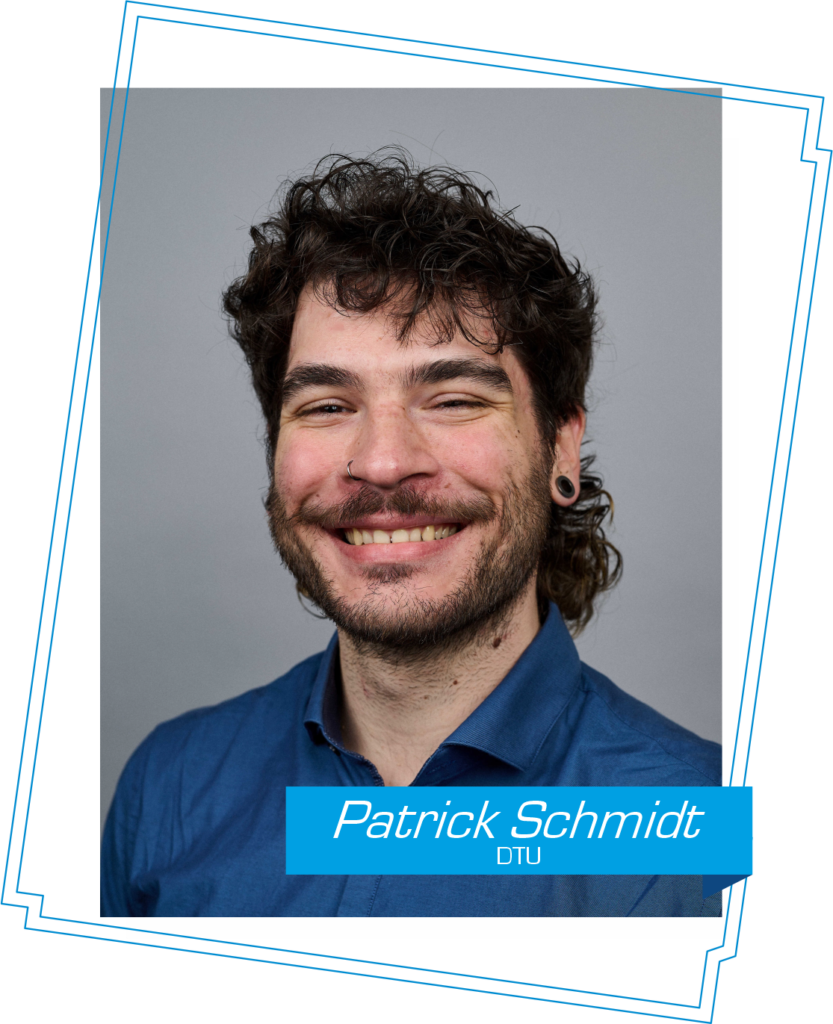

Can you tell us a bit about your background, and how it led you to become involved in the RoBétArmé project?
I’m originally from Germany and came to Denmark to do my MSc in Autonomous Systems at DTU. I wrote my thesis about object detection for weeds in dairy grasslands – that’s how I got more and more into research. I wanted to continue doing research – and that’s why I applied for the PhD position within the RobetArme project. For me, it’s intriguing to do computer vision in unusual areas such as agriculture or construction, so this was the perfect opportunity.
Could you share some insights into your specific role and involvement in the project? What are your main responsibilities and contributions?
Being a PhD student in the project means being actively involved in the research and development of groundbreaking technologies. Specifically, I’ve worked on training an algorithm that gives the inspection robot semantic understanding capabilities. That means that the algorithm takes an image, for example from a video, and figures out where the shotcreting robot needs to apply concrete. As a result, together with other partners, we contributed a pipeline that can create a 3D model of the environment. In this model, the areas where shotcrete needs to be applied are highlighted.
Research endeavors often come with challenges and obstacles. What are some of the main challenges you've encountered during your journey with RoBétArmé, and how have you managed to overcome them?
One of the first challenges was to get an overall picture of the current state-of-the-art research concerning computer vision in construction. It took some time to get this overview and identify challenges that are still unresolved. And there are many, since construction is yet to adopt advanced, digital technologies. Specifically for my contribution, there was a big lack of data. Given that most of the algorithms are data-hungry, I overcame this challenge by curating a little dataset reflecting our use cases.
Collaboration and networking are essential in research projects like RoBétArmé. Could you discuss some of your experiences collaborating with other researchers and institutions within the project?
We’re a big consortium – which has both its advantages and disadvantages. It’s hard to get to know everyone if you’re a huge bunch of people coming from different cultures. But it comes with a major advantage: a gigantic pool of knowledge and expertise. When we have regular meetings with our partners, we can report on our progress and get valuable feedback from other researchers and experts. And I think this is what pays off and reflects in the work we do.
Can you highlight any specific achievements or breakthroughs from your work within the project that you're particularly proud of?
I’m the first author of a paper that was created as an outcome of work conducted in close collaboration with partners at CERTH. We’ve submitted this paper to a conference and got it accepted. This reassures me that the work we do is of good quality since people outside of the project think it’s worth disseminating, and this makes me very proud.
Looking to the future, what are your hopes and aspirations for the impact of your research within RoBétArmé? How do you envision it contributing to advancements in your field and society as a whole?
I hope that my research provides a solid basis for other parts of the project relying on the output of the model I contributed to. When it’s time to put everything together, it will hopefully work and pave the way for a safer, more efficient way to perform shotcreting. That will then also inspire other researchers to work on bringing autonomous solutions to novel fields. My hope then is that we find safer occupations for affected workers, making their lives easier and less stressful.